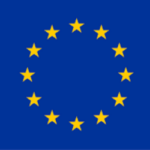Demonstration of Tracking and Monitoring of Artworks – Usecase and Componets Used
Addressing the Challenges of Artwork Transportation and Exhibition
The transportation and exhibition of masterpieces and valuable artworks present significant challenges for museums, galleries, and collectors. Ensuring the safety and integrity of these priceless items during transit and while on display is of great importance. The CERTIFY project aims to address these concerns by developing an innovative cybersecurity solution for tracking and monitoring artworks.
Traditionally, artwork tracking has relied on manual processes or basic GPS systems, which often lack robust security measures. This leaves valuable pieces vulnerable to theft, damage, or environmental factors that could compromise their condition. CERTIFY recognizes the need for a more sophisticated approach that combines advanced IoT technology with state-of-the-art cybersecurity protocols.
By leveraging cutting-edge technologies such as cryptographic processors, encryption, and blockchain-inspired distributed ledger technology (DLT), CERTIFY aims to revolutionize the way artworks are tracked and monitored throughout their journey from storage to exhibition and back. This innovative approach ensures not only real-time tracking but also the highest levels of data integrity and confidentiality, crucial for protecting sensitive information related to valuable artworks. To better understand the practical implementation of CERTIFY's solution, we invite you to watch our accompanying demonstration.
Cryptographic Processors for Secure Tracking
The CERTIFY project's technical implementation centers around a sophisticated IoT node device equipped with an embedded dedicated cryptographic processor. This processor is based on a certified Secure Element (SE), which forms the cornerstone of the system's security architecture.
At the heart of the system is the integration of the Secure Element as a dedicated cryptographic processor. This hardware-based approach provides a root of trust for all security operations, significantly enhancing the overall security posture of the solution. Complementing the SE is a dedicated Hardware Security Module (HSM) used for secure key storage.
Data integrity and non-repudiation are ensured through a robust signing mechanism. All tracking and monitoring data is digitally signed using private keys stored in the HSM. This signed data is then recorded on a distributed ledger, creating an immutable and transparent record of the artwork's journey and environmental conditions. Environmental monitoring is a key feature of the CERTIFY solution. The IoT node is equipped with sensors to track microclimatic conditions and vibrations. Stakeholders can configure thresholds for these parameters, enabling the system to generate alerts when potential risks to the artwork are detected. All data transmission between the IoT node and backend systems is encrypted, protecting against interception and tampering. This end-to-end security approach ensures that the entire lifecycle of artwork tracking data is protected against various cybersecurity threats.
The system implements a comprehensive authentication framework to control access to sensitive data and system functions. This ensures that only authorized users and administrators can interact with the tracking and monitoring data, maintaining the confidentiality of artwork movements and conditions.
Innovations and Approaches
The pilot introduces extensive improvements and innovations to artwork tracking and monitoring. By utilizing hardware-based security through certified Secure Elements and Hardware Security Modules, CERTIFY provides unparalleled protection against cyber threats. The incorporation of blockchain-inspired technology for data integrity creates an auditable, tamper-evident record of an artwork's history, enhancing trust among stakeholders.
Security and privacy are at the core of CERTIFY's design, with a zero-trust architecture and strict authentication protocols. The system's holistic approach to environmental monitoring offers valuable data for conservators and curators



